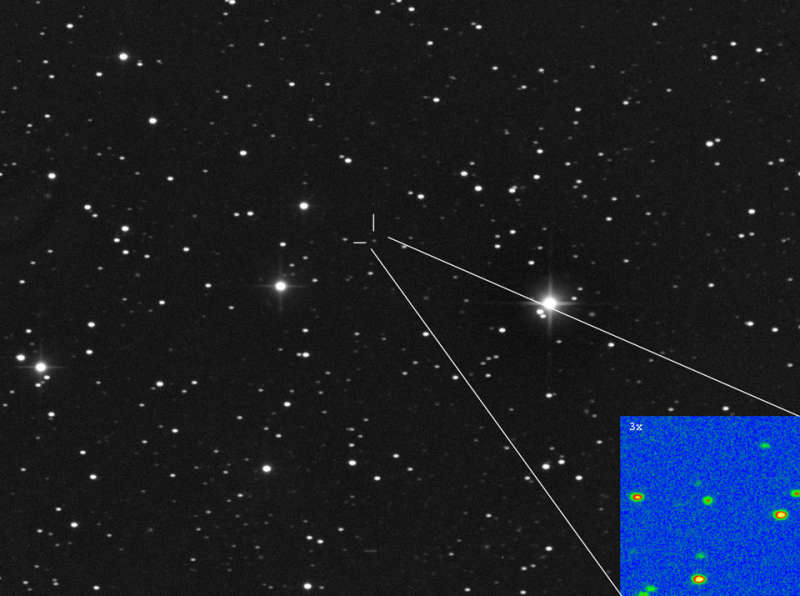Credit & Copyright: Ligustri Rolando
Explanation:
Could this dim spot brighten into one of the
brightest comets
ever?
It's possible.
Alternatively,
the comet could break up
when it gets closer to the Sun, or brighten much
more modestly.
Sky enthusiasts the world over are
all
abuzz, though, from the more
optimistic speculations -- that
the newly discovered
C/2012 S1 (ISON) could develop
a
spectacular tail or briefly approach the
brightness of the full Moon toward the end of 2013.
Comet ISON currently is very faint but is just visible at
magnitude 18 in the
above image.
The comet, discovered just over a week ago from
Russia by
Vitali Nevski (Belarus)
and Artyom Novichonok (Russia), is currently falling toward the Sun
from between the orbits of Jupiter and Saturn.
In early 2013 October it will pass very near Mars and possibly be visible to rovers
and orbiting spacecraft.
Comet ISON appears on course to achieve
sungrazer status as it passes within a solar diameter
of Sun's surface in late 2013 November.
Whatever survives will then pass nearest the Earth in late 2013 December.
Astronomers around the world will be tracking this large dirty snowball closely to
better understand its nature and how it
might evolve
during the next 15 months.
1999 2000 2001 2002 2003 2004 2005 2006 2007 2008 2009 2010 2011 2012 2013 2014 2015 2016 2017 2018 2019 2020 2021 2022 2023 2024 2025 |
Yanvar' Fevral' Mart Aprel' Mai Iyun' Iyul' Avgust Sentyabr' Oktyabr' Noyabr' Dekabr' |
NASA Web Site Statements, Warnings, and Disclaimers
NASA Official: Jay Norris. Specific rights apply.
A service of: LHEA at NASA / GSFC
& Michigan Tech. U.
|
Publikacii s klyuchevymi slovami:
comet - Solar System - komety
Publikacii so slovami: comet - Solar System - komety | |
Sm. takzhe:
Vse publikacii na tu zhe temu >> | |
